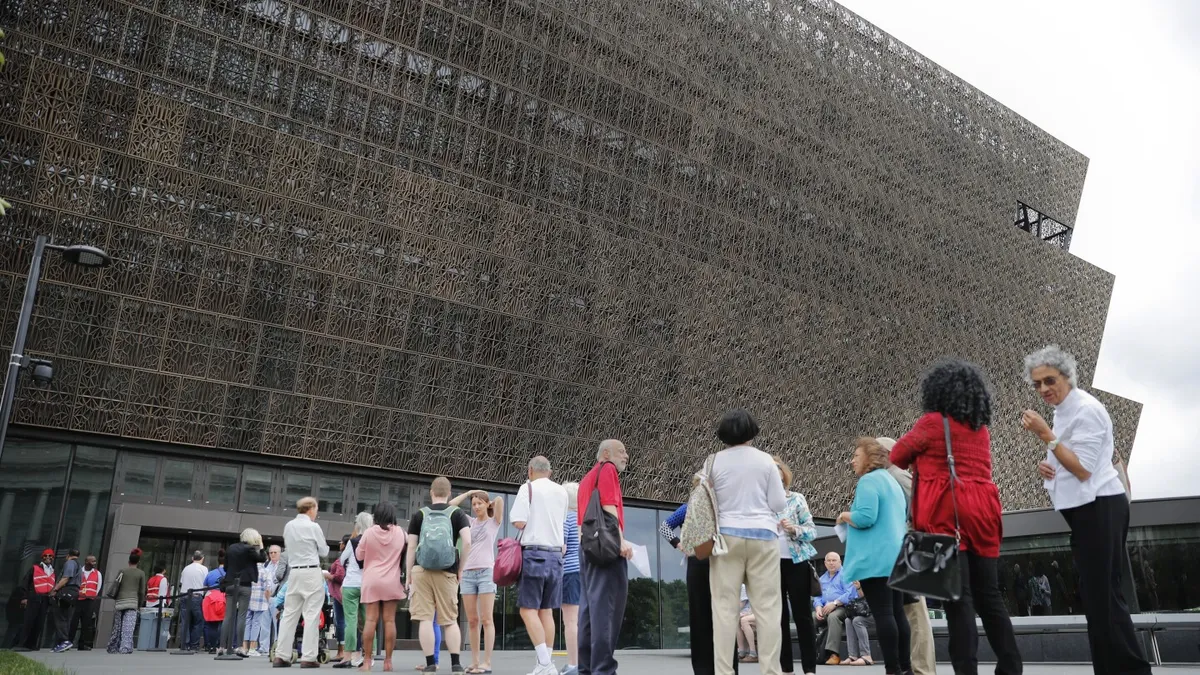
In a significant move, President Donald Trump announced his intention to implement changes at the Smithsonian Institution through an executive order. This order aims to halt funding for programs that promote what he describes as “divisive narratives” and “improper ideology.” This action is part of Trump’s broader strategy to combat cultural institutions that he believes have become too liberal.
During his announcement, Trump expressed concerns about a “concerted and widespread” effort over the last decade to reshape American history. He claimed that this movement has replaced “objective facts” with a “distorted narrative driven by ideology rather than truth.” Trump argued that such changes cast the founding principles of the United States in a “negative light.”
The executive order, signed behind closed doors, places Vice President JD Vance—who serves on the Smithsonian Institution's Board of Regents—in charge of overseeing efforts to eliminate what is deemed “improper ideology” from the institution. This mandate covers all areas, including its museums, educational programs, research centers, and the National Zoo.
This directive represents the latest effort by the Republican president to challenge cultural pillars such as universities and the arts that he feels do not align with conservative values. Recently, Trump positioned himself as the chairman of the John F. Kennedy Center for the Performing Arts, aiming to revamp programming, including the prestigious annual Kennedy Center Honors awards show.
In a similar vein, the Trump administration compelled Columbia University to implement a series of policy changes by threatening the esteemed institution with the loss of hundreds of millions in federal funding. This tactic reflects the administration's commitment to ensuring that educational institutions adhere to conservative ideologies.
The executive order also signals a potential revival of statues and monuments dedicated to Confederate figures. Many of these statues were removed or altered following the police killing of George Floyd in 2020 and the subsequent rise of the Black Lives Matter movement, which Trump and other conservatives oppose.
Additionally, the order calls for enhancements to Independence Hall in Philadelphia, aiming for completion by July 4, 2026, to coincide with the 250th anniversary of the signing of the Declaration of Independence.
Trump has specifically criticized several Smithsonian museums, including the National Museum of African American History and Culture, which opened in 2016, the Women’s History Museum currently in development, and the American Art Museum. He stated, “Museums in our Nation’s capital should be places where individuals go to learn — not to be subjected to ideological indoctrination or divisive narratives that distort our shared history.”
In response, Linda St. Thomas, the Smithsonian Institution’s chief spokesperson, stated in an email that they had “no comment for now” regarding the executive order.
Under Trump's order, Vice President Vance will collaborate with the White House budget office to guarantee that future funding for the Smithsonian Institution is not allocated to programs that “degrade shared American values or divide Americans based on race.” Moreover, Trump emphasized that the women’s history museum should celebrate women without recognizing “men as women in any respect.”
The order mandates the interior secretary to restore monuments, memorials, and statues that have been removed or altered since January 1, 2020. This restoration aims to counter what Trump describes as a “false reconstruction of American history” and to prevent the minimization of significant historical events or figures.
The Smithsonian Institution stands as the world’s largest museum, education, and research complex, comprising 21 museums and the National Zoo. Eleven of these museums are situated along the National Mall in Washington, D.C. Established by Congress with funding from James Smithson, a British scientist, the institution was founded to promote knowledge and cultural enrichment.